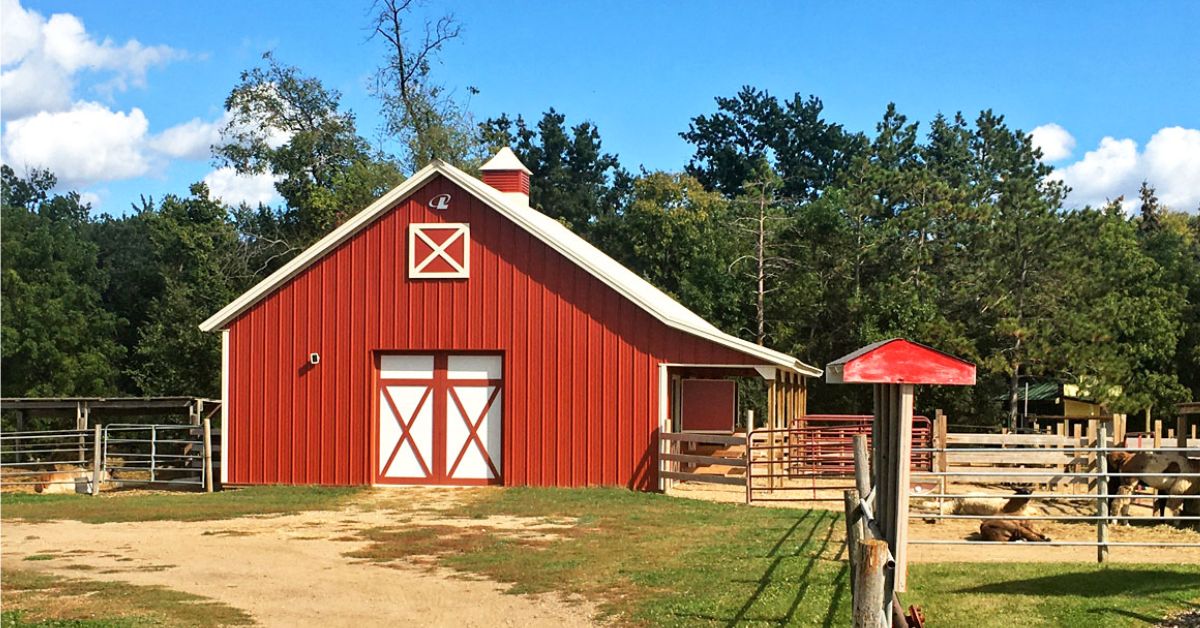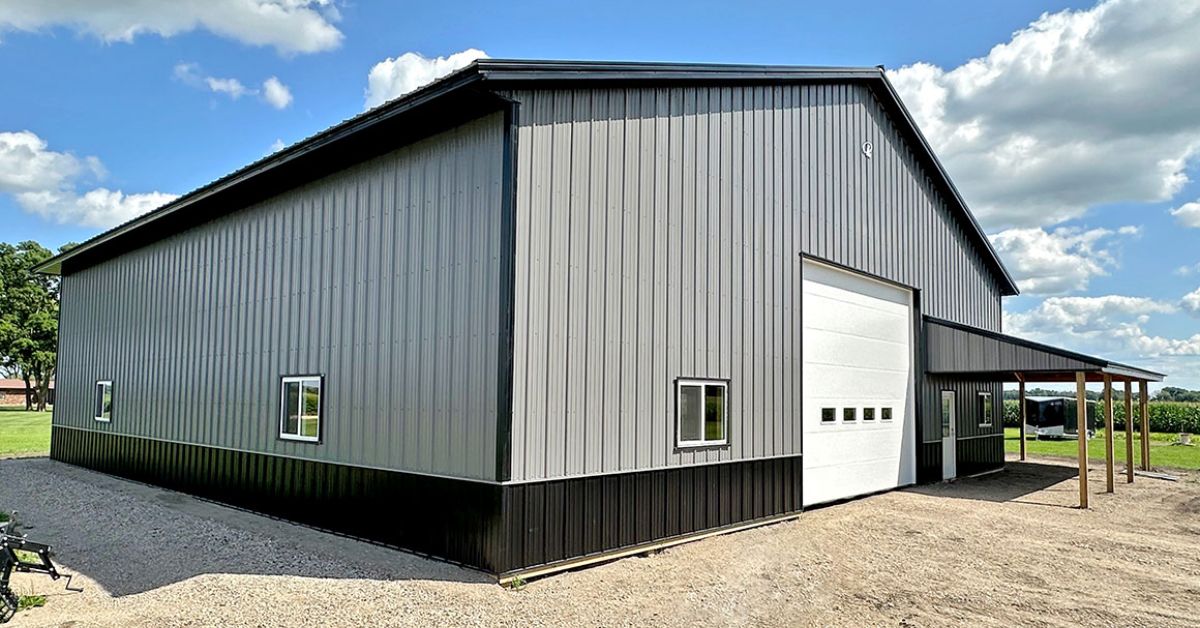How To Make Sure Your Pole Barn Meets Your Long-Term Needs
.jpg)
Pole barns have become a popular choice for property owners due to their affordability, versatility, and durability. Whether you need extra storage space, a workshop, or even a living space, pole barns are adaptable structures that can serve a variety of purposes. However, to truly maximize the potential of your pole barn, you’ll need to plan ahead.
Here, we'll discuss how to make sure your pole barn meets your long-term needs.
Common Uses for Pole Barns
Before planning your pole barn, consider the wide range of uses that these structures can serve:
- Storage: Ideal for farm equipment, vehicles, tools, or bulk materials.
- Workshops: Perfect for carpentry, welding, or other trades.
- Agricultural Needs: Shelter for livestock, hay, or produce.
- Garages: Multi-bay garages for personal or commercial vehicles.
- Event Spaces: Great for hosting weddings, parties, or gatherings.
- Residential Spaces: Some people even convert pole barns into cozy homes or guesthouses.
By considering these potential uses, you can better define the purpose of your pole barn and plan accordingly.
Defining Your Long-Term Needs
When building a pole barn, thinking long-term is crucial. Think about how you'll use the pole barn. Are you building it solely for vehicle storage? Do you envision expanding its purpose into a workspace or event area?
Consider whether you'll need more space in the future, and ensure your plans account for these expectations. Can your pole barn be expanded without significant difficulty? Building with expansion in mind means leaving space for additional features, such as extended bays, extra utilities, or even secondary floors. Proactive planning now saves you from the hassle of tearing down walls or starting over later.
Selecting the Right Materials
Selecting the best materials for your pole barn provides a solid foundation for long-term durability and cost-effectiveness. Here's a look at some common options:
- Wood: Wood is a classic choice for pole barns due to its availability, affordability, and ease of use. It provides excellent structural support and is relatively simple to modify or repair over time.
- Steel: Known for its strength and durability, steel is an ideal option for barns that need to handle heavy loads or withstand harsh weather conditions. It is also resistant to pests and fire, enhancing long-term performance.
- Concrete: Concrete can be used for pole barn flooring or as part of the foundation. It provides a stable, durable base that is resistant to moisture, making it ideal for storing heavy equipment or caring for livestock.
- Vinyl: Another option that offers versatility and low maintenance, vinyl is resistant to rot, pests, and moisture, making it a durable choice for siding or exterior finishes. Vinyl is also available in a variety of colors and styles, allowing for customization to match specific aesthetic preferences.
No matter your materials, opt for high-quality and low-maintenance options. Investing in durable materials now saves you money in maintenance and repairs later.

Design and Layout Considerations
The design of your pole barn can significantly influence its functionality. Here's what to keep in mind:
Optimizing Space for Current and Future Needs
When designing your pole barn, consider how the space will be used both now and in the years to come. Begin by assessing your current storage or operational needs, including equipment size, inventory, and workspace requirements. Then, consider potential future expansions or added functionalities, such as additional storage, upgraded machinery, or evolving business operations.
Incorporating versatile design elements, such as adjustable shelving or expandable bays, can ensure your pole barn remains practical as your needs evolve. Adequate planning now can save significant costs and headaches down the road.
Planning for Utilities, Ventilation, and Insulation
When designing your pole barn, be sure to account for utilities, ventilation, and insulation so the structure is both functional and comfortable. Begin by determining your utility requirements, such as electricity, water, and internet access, and plan their installation early to avoid costly adjustments later.
Proper ventilation helps maintain air circulation, control humidity, and prevent condensation, which can lead to long-term structural damage. Whether through ridge vents, windows, or fans, ensure your ventilation system is adequate for your barn's intended use. For optimal temperature control and energy efficiency, consider insulation options tailored to your local climate and the barn's intended purpose.
Regulatory Compliance and Permits
Skipping this step could lead to fines, delays, or worse. Here's how to ensure your pole barn meets local regulations:
Navigating Codes and Regulations
Research local zoning laws and building codes well in advance. Requirements such as setbacks, height restrictions, and land use regulations vary by location. Consulting with local authorities can help you avoid costly errors.
Ensuring Proper Permitting
Secure all necessary permits for construction. Hiring a professional contractor can streamline this process, as they're often familiar with local requirements. Proper documentation ensures your structure is compliant and built to last.
Environmental Considerations
Proper waste management plans can minimize unnecessary debris and promote recycling. Additionally, consider the environmental footprint of your materials and methods. Addressing these challenges not only benefits the environment but can also align your project with local and federal environmental regulations.

Maintenance and Upkeep
Even the most well-built pole barn requires some upkeep. Stay ahead with regular maintenance:
- Inspect the roof regularly for leaks or damage and make necessary repairs promptly.
- Check the exterior siding for signs of wear, rust, or decay, and repaint or replace as needed.
- Ensure gutters and downspouts are clear of debris to prevent water damage.
- Lubricate door hinges, tracks, and locks to keep them functioning smoothly.
- Monitor the foundation for cracks or shifting and address issues early to prevent structural problems.
- Maintain a clean and organized interior to prevent moisture and pest issues.
- Regularly inspect and maintain electrical and plumbing systems within the barn.
The Importance of Regular Attention
Regular attention to barn maintenance is crucial for ensuring the longevity and safety of the structure. Consistent upkeep also enhances the overall functionality and appearance of the barn, preserving its value and utility. By identifying and addressing potential issues early, you can prevent minor problems from escalating into costly repairs.
Working with the Right Professionals
Constructing a pole barn is no small task. A reputable contractor ensures your pole barn is built to withstand both time and weather. From architectural planning to adherence to building codes, skilled professionals handle everything.
Look for contractors with extensive experience in constructing pole barns. Check reviews, ask for referrals, and ensure they're licensed and insured. Don't forget to request a detailed quote and timeline before committing to a decision. Conduct thorough research to hire the right team, save money, and minimize headaches throughout the construction process.
Building a Pole Barn That Stands the Test of Time
Investing time in planning and preparation ensures your pole barn withstands the test of time. If you want to make sure your pole barn meets your long-term needs, these best practices are sure to get you there.
Do you need further guidance or expert recommendations? At Lester Buildings, we're the experts in designing and building metal pole barns. We'll help you achieve the result you've been looking for. Together, we'll make your vision a reality!
